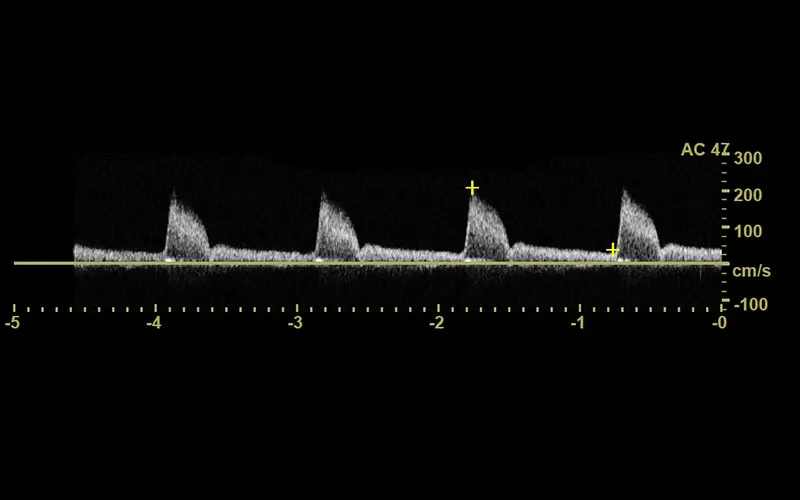

Mesenteric artery stenosis poses a critical risk to organs due to the lack of proper circulation and blood flow. Diagnosing this condition early can help prevent patients from enduring the grave consequences of mesenteric artery stenosis.
This test is useful in identifying conditions such as plaque, stenosis, or embolic occlusions. Embolic occlusions can block the blood supply to certain parts of the body, such as the spleen, sections of the stomach and liver, or the entire intestinal system. This test is non-invasive and uses a gel, sound waves, and a small probe to produce an image of the mesenteric arteries on the screen. No needles, dyes, or radiation is required.
The Doppler ultrasound technology reflects high-frequency sound waves from red blood cells to detect activity and blood flow. It can recognize conditions like arterial stenosis or occlusion in the superior mesenteric artery and diseases like atherosclerosis or arterial thromboembolic disease.
If you need treatment for renal artery stenosis, contact us at North Atlanta Vascular and Vein Center. We provide high-quality treatments for vein diseases.


A mesenteric artery ultrasound evaluates the narrowing areas or blockages in the mesenteric arteries to determine if they are properly conducting their primary function of supplying blood to the abdominal organs.
This test takes nearly one hour to complete.
Ensure you do not eat, drink, chew gum, or smoke ten hours before the exam. This is because doing so may cause gas formation, which may hinder a smooth exam. Also, avoid foods that cause you gas trouble the day before the exam. You are allowed to take your medications as prescribed. However, make sure you consume as little water as possible. This is required to get a clearer picture of your abdomen during the exam.